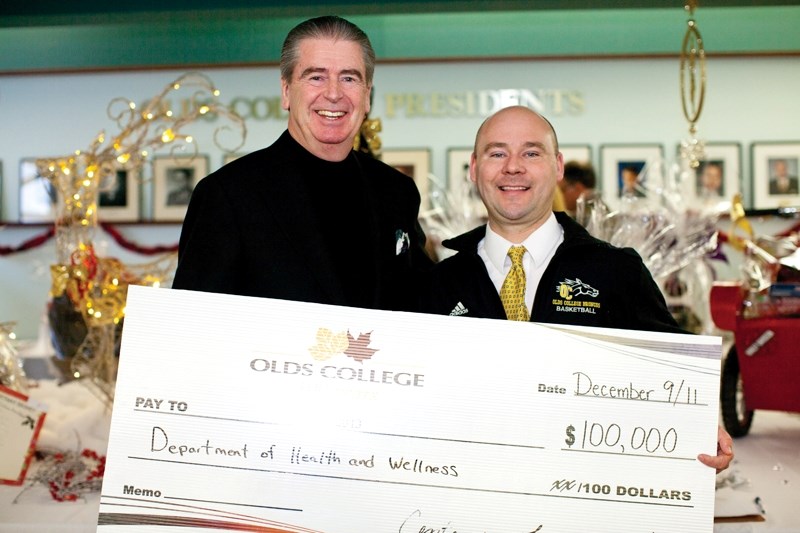Last week, Greg Lendvay, Olds College director of health and wellness, learned that his proposal had won the institution's $100,000 Centennial Innovation Fund.
“His proposal is for a Canadian Centre for Rural High Performance Sport,” said Dr. Jason Dewling, vice-president of academics and research at Olds College.
“His concept is to be able to bring rural athletes here in the summer and do high performance training.”
Lendvay will officially receive the money in July 2012.
“He can do his pre-planning between now and June. Then he has the fiscal year of 2012-13 to spend it,” said Dewling.
“The idea is we will see the benefit of the centre during the college's 100th year in 2013..”
Lendvay's proposal was motivated by the college's impending move from the Alberta Colleges Athletic League (ACAL) to the Alberta Colleges Athletic Conference (ACAC).
“With the current ACAC sport applications and the junior varsity programs, Olds College will have 15 athletic teams,” wrote Lendvay in his application.
“This will be the most of any … college in Alberta, meeting our internal department objective of being the best school in rural Western Canada in sport.”
He believes that Olds College needs to step up in what it does and offers.
“We needed an opportunity to showcase what we currently have and be better strategically than anybody else within our conference,” said Lendvay.
He already is studying what the centre will offer.
“We have already toured some facilities, some that are NCAA Division 1 in the U.S.,” said Lendvay.
“I think we would model off of that and I think it would be capable of training Olympic athletes.”
Available campus space and sustainability are two issues that are weighing on his mind.
“We are hoping that we can link some things to obviously some additional sponsorship money and leverage some sponsorship money as well as the possibility of increased academic offerings,” said Lendvay.
The college initially received 28 applications for the fund.
“It was a huge success. People had three weeks to out their applications together. They came from students, staff, faculty and even alumni,” said Dewling.
“This was hugely successful in getting the best ideas out of our institution. It totally achieved what we had hoped it would and beyond. It was a good cultural exercise too for the college.”
Out of the 28 applications, the college's president and three vice-presidents chose the top three applications.
“Then, the top three went back to the people and they voted. Six-hundred and eighty-three students, staff and alumni voted online. That is incredible engagement of our people,” said Dewling.
During the first week of December the top three candidates campaigned on the college campus.
“Some were sending videos; others were a paper-type of promotion. Lendvay did more of a ground level recruitment,” said Dewling.
“I do not know the details but I think he had student set-ups as they were going into their cafeteria and had computers there so that people could vote.”
The other two short-listed projects were a rural business incubator program and a brewing piece of equipment that would enable the college to start a beer-brewing program.
“We thought that the brewing project would win because of its appeal to students. It came second,” said Dewling.
The college's executive was so impressed by the level of participation of its staff, students and alumni that it is considering having another competition in the future.
“This was so successful we would be hard-pressed not to consider doing it again. We will meet as a group again and make a decision about next year,” said Dewling.
Some of the 27 remaining projects will also get funding.
“Out of 28 ideas, there will be probably be six or seven that will get some sort of life, either through some other fund or people found creative ways to implement partial ideas,” said Dewling.
“We said that if we spotted other good ideas, we could fund them regardless if they win or not. We did not want to pigeonhole losing some of the good ideas.”




